Cause of death Natural causes Role Actress Name Joan Fontaine | Citizenship British
American Resting place Cremated Siblings Olivia de Havilland | |
 | ||
Full Name Joan de Beauvoir de Havilland Born October 22, 1917 ( 1917-10-22 ) Tokyo, Japan Residence Carmel Highlands, California Other names Joan Burfield
Joan St. John Education Los Gatos High School
American School in Japan Died December 15, 2013, Carmel Highlands, California, United States Spouse Alfred Wright, Jr. (m. 1964–1969) Children Debbie Dozier, Martita Pareja Movies Rebecca, Suspicion, Letter from an Unknown, Jane Eyre, The Constant Nymph Similar People Olivia de Havilland, Joan Crawford, Vivien Leigh, Bette Davis, Laurence Olivier | ||
Feuding sisters joan fontaine olivia de havilland cbc archives cbc
Joan Fontaine (born Joan de Beauvoir de Havilland; October 22, 1917 – December 15, 2013) was a British-American actress best known for her starring roles in Hollywood films. Fontaine appeared in more than 45 feature films in a career that spanned five decades.
Contents
- Feuding sisters joan fontaine olivia de havilland cbc archives cbc
- Joan fontaine and gary cooper win acting awards 1942 oscars
- Early life
- Career
- Later career
- Personal life
- Marriages and children
- Sibling rivalry
- Death and legacy
- References
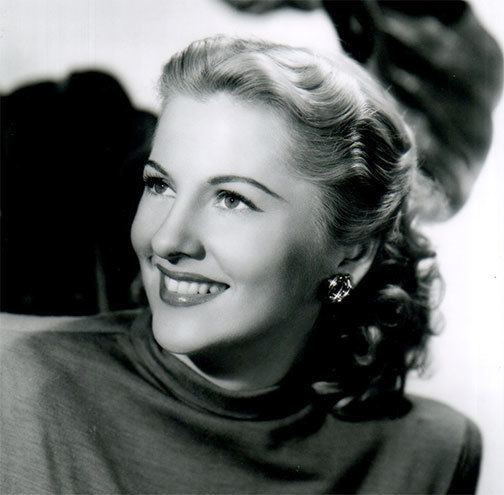
Born in Tokyo to British parents, Fontaine moved to California with her mother, Lillian Fontaine, and sister, the actress Olivia de Havilland, following her parents' divorce. She was anaemic as a child, and her childhood was consequently marred by poor health, but she had improved by her teen years. After living in Japan and attending school there for a short while, she began her stage career in 1935, signing a film contract with RKO Pictures. Fontaine received her first major role in The Man Who Found Himself (1937); however, she failed to make a significant impression and her contract was not renewed.
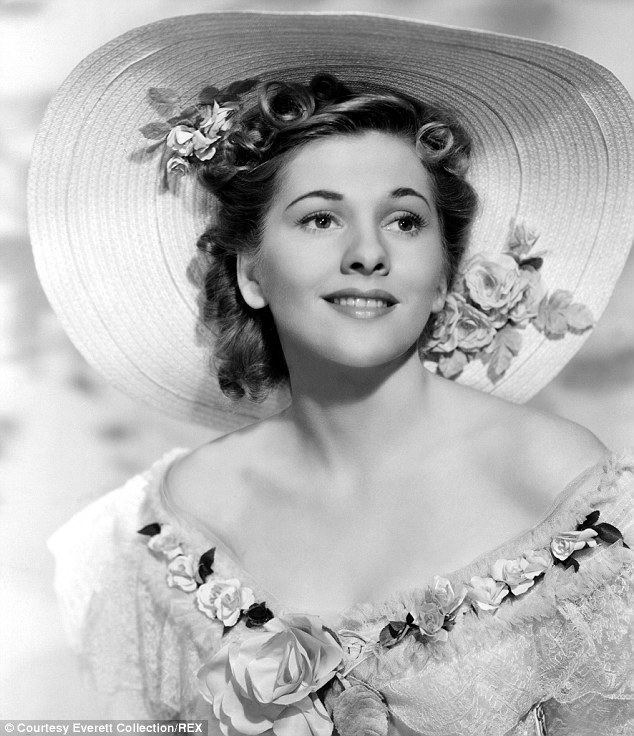
Her career prospects improved greatly after her starring role in the Alfred Hitchcock-directed Rebecca (1940), for which she received the first of what would be three nominations for the Academy Award for Best Actress; the following year, she won for her role in Suspicion (1941). A third Oscar nomination came with the film The Constant Nymph. She appeared mostly in drama films through the 1940s—including Letter from an Unknown Woman, which is now considered a classic. In the next decade, her career began to decline and she moved into stage and television roles. She appeared in fewer films into the 1960s, her final feature film being The Witches (1966).

Fontaine was active in radio, television, and the stage for most of her middle to later life. She released an autobiography, No Bed of Roses, in 1978; she continued to act until her last performance in 1994. Fontaine lived in Carmel Highlands, California, where she owned a home, Villa Fontana. She died there of natural causes at the age of 96 in 2013. Having won an Academy Award for her role in Suspicion, Fontaine is the only actor to have won an Academy Award for acting in a Hitchcock film. Furthermore, she and her sister remain the only siblings to have won major acting Academy Awards.
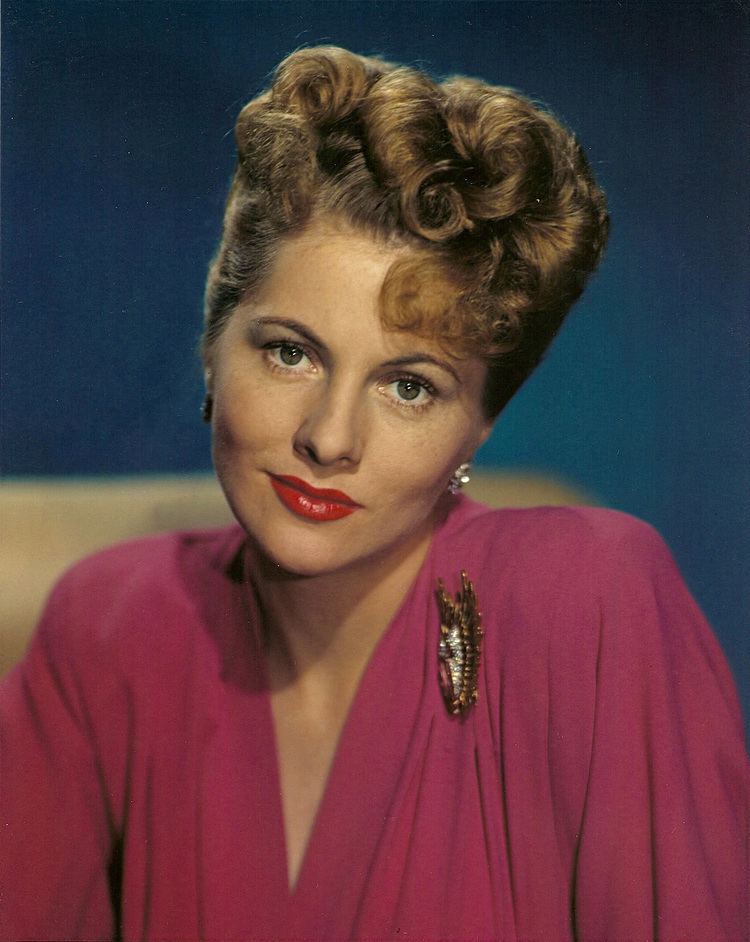
Married four times, she had one child by birth and one child by adoption, from whom she was later estranged. Her relationship with her sister was long known to be acrimonious, and included long periods of estrangement, especially in later life.
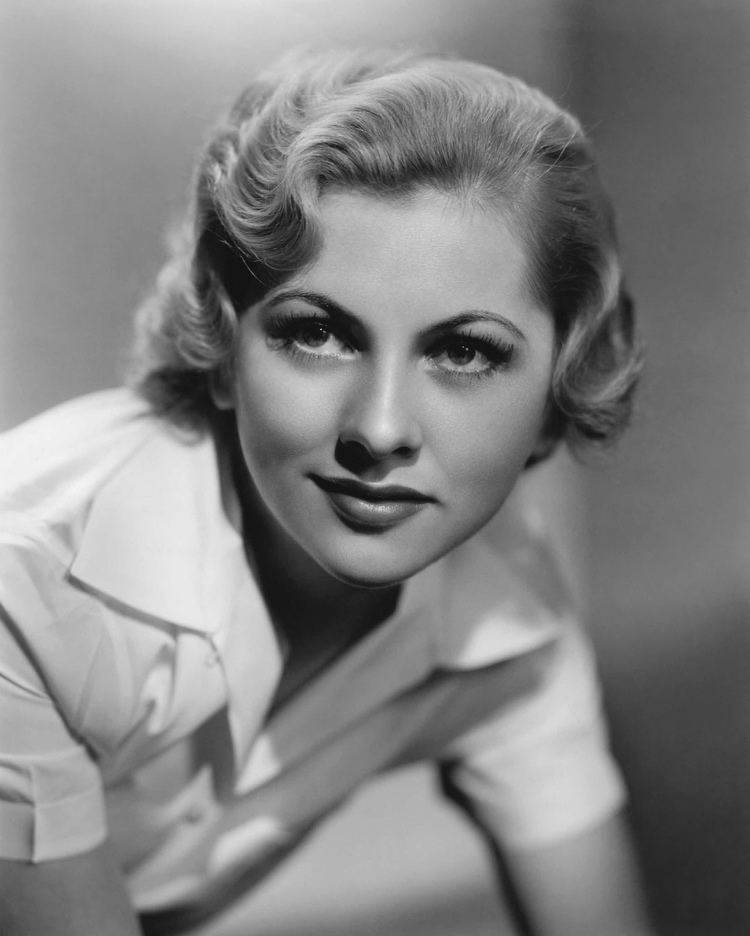
Joan fontaine and gary cooper win acting awards 1942 oscars
Early life
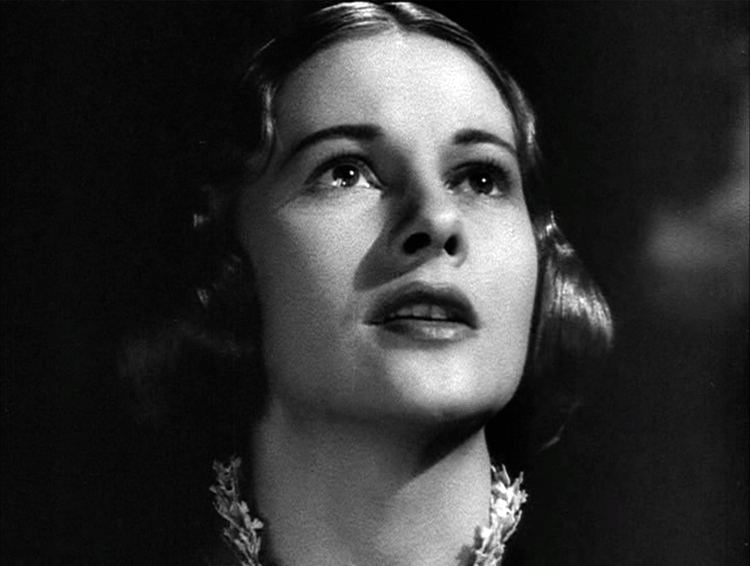
Joan de Beauvoir de Havilland was born in Tokyo, Japan, to English parents. Her father, Walter Augustus de Havilland (August 31, 1872 – May 20, 1968), was educated at the University of Cambridge and served as an English professor at the Imperial University in Tokyo before becoming a patent attorney. Her mother, Lilian Augusta de Havilland Fontaine (née Ruse; June 11, 1886 – February 20, 1975), was educated at the Royal Academy of Dramatic Art in London, and became a stage actress who left her career after going to Tokyo with her husband. Her mother returned to work with the stage name "Lillian Fontaine" after her daughters achieved prominence in the 1940s. Joan's paternal cousin was Sir Geoffrey de Havilland (1882–1965), an aircraft designer known for the de Havilland Mosquito, and founder of the aircraft company which bore his name. Her paternal grandfather, the Reverend Charles Richard de Havilland, was from a family from Guernsey, in the Channel Islands.
De Havilland's parents married in 1914 and separated in 1919, when Lilian decided to end the marriage after discovering that her husband used the sexual services of geishas; the divorce was not finalized, however, until February 1925.
Taking a physician's advice, Lilian de Havilland moved Joan—reportedly a sickly child who had developed anaemia following a combined attack of the measles and a streptococcal infection—and her elder sister, Olivia de Havilland, to the United States. The family settled in Saratoga, California, and Fontaine's health improved dramatically. She was educated at nearby Los Gatos High School, and was soon taking diction lessons alongside her elder sister. When she was 16 years old, de Havilland returned to Japan to live with her father. There she attended the Tokyo School for Foreign Children, graduating in 1935.
Career
Fontaine made her stage debut in the West Coast production of Call It a Day (1935) and was soon signed to an RKO contract. Her film debut was a small role in No More Ladies (also 1935) in which she was credited as Joan Burfield.
Although Fontaine, under contract with RKO, had already made her screen appearance in No More Ladies, a series of other minor roles followed, in A Million to One and Quality Street (both 1937), opposite Katharine Hepburn. The studio considered her a rising star, and touted The Man Who Found Himself (also 1937) as her first starring role, placing a special screen introduction, billed as the "new RKO screen personality" after the end credit. She next appeared in a major role alongside Fred Astaire in his first RKO film without Ginger Rogers, A Damsel in Distress (1937), but audiences were disappointed and the film flopped. She continued appearing in small parts in about a dozen films, including The Women (1939), but failed to make a strong impression, and her contract was not renewed when it expired in 1939.
Fontaine's luck changed one night at a dinner party when she found herself seated next to producer David O. Selznick. Selznick and she began discussing the Daphne du Maurier novel Rebecca, and Selznick asked her to audition for the part of the unnamed heroine. She endured a grueling six-month series of film tests, along with hundreds of other actresses, before securing the part sometime before her 22nd birthday.
Rebecca, starring Laurence Olivier alongside Fontaine, marked the American debut of British director Alfred Hitchcock. In 1940, the film was released to glowing reviews, and Fontaine was nominated for an Academy Award for Best Actress. Fontaine did not win that year (Ginger Rogers took home the award for Kitty Foyle), but she did win the following year for Best Actress in Suspicion, which co-starred Cary Grant and was also directed by Hitchcock. This was the only Academy Award-winning acting performance to have been directed by Hitchcock.
During the 1940s, Fontaine excelled in romantic melodramas. In 1943, She starred along with Charles Boyer in The Constant Nymph. She was nominated for a third Academy Award for her performance in this film. She also starred as the titular protagonist in the film Jane Eyre that year. Both The Constant Nymph and Jane Eyre are considered to be among the finest films she starred in.
In 1944 she starred in the film Frenchman's Creek. Like Rebecca, this was also based on a novel by Daphne du Maurier. Fontaine personally considered Frenchman's Creek one of her least favorites among the films she starred in.
The most memorable film Fontaine starred in during the late 1940s is Letter from an Unknown Woman. Released in 1948, Letter from an Unknown Woman was directed by Max Ophüls and is today considered to be a classic. Fontaine's performance in this film is also considered to be one of the finest in her career.
Although she is mostly remembered for her performances in the two Hitchcock films and the romantic melodramas she starred in throughout the 1940s, she starred in a wide variety of genres, like the comedy film The Affairs of Susan, the musical film The Emperor Waltz (directed by Billy Wilder and co-starring Joseph Cotten), the film noir Kiss the Blood Off My Hands (co-starring Burt Lancaster) and the adventure drama Ivanhoe, which also starred Robert Taylor and Elizabeth Taylor. Although she was often cast as good-natured and naive characters or aristocrats, she played unsympathetic characters in films like Ivy and Born to Be Bad.
Her film successes slowed a little during the 1950s, and she also began appearing in television and on the stage. She won good reviews for her role on Broadway in 1954 as Laura in Tea and Sympathy, opposite Anthony Perkins. She also appeared in numerous radio shows during the 1940s for the Lux Radio Theater.
Later career
During the 1960s, Fontaine appeared in several stage productions, including Private Lives, Cactus Flower and an Austrian production of The Lion in Winter. Her last theatrical film was The Witches (1966), which she also co-produced. She continued appearing in film and television roles throughout the 1970s and 1980s, and was nominated for an Emmy Award for the soap opera Ryan's Hope in 1980.
Fontaine's autobiography, No Bed of Roses, was published in 1978.
Fontaine's last role for television was in the 1994 TV film Good King Wenceslas, after which she retired to her estate, Villa Fontana, in Carmel Highlands, California, where she spent time in her gardens and with her dogs.
For her contribution to the motion picture industry, Fontaine has a star on the Hollywood Walk of Fame at 1645 Vine Street. She left her hand and foot prints in front of the Grauman's Chinese Theatre on May 26, 1942.
She was a devout Episcopalian and a member of Episcopal Actors Guild.
Fontaine was a Democrat who not only supported the run of Adlai Stevenson but also had a personal relationship as well, stating, "We had a tenderness for each other that grew into something rather serious. There was so much speculation about our marrying in the press that over lunch at his apartment in the Waldorf Towers he told me he could not marry an actress. He still had political ambitions and the “little old ladies from Oshkosh” wouldn’t approve. I told him it was just as well. My family would hardly approve of my marrying a politician."
Personal life
Fontaine held dual citizenship; she was British by birthright (both her parents were British) and became an American citizen in April 1943.
Marriages and children
Fontaine was married and divorced four times. Her first marriage was to actor Brian Aherne, in 1939 in Del Monte, California; they divorced in April 1945. In May 1946, she married actor/producer William Dozier in Mexico City. They had a daughter, Deborah Leslie, in 1948, and separated in 1949. Deborah is Fontaine's only biological child. The following year, Fontaine filed for divorce, charging Dozier with desertion. Their divorce was finalized in January 1951. Fontaine's third marriage was to producer and writer Collier Young on November 12, 1952. They separated in May 1960, and Fontaine filed for divorce in November 1960. Their divorce was finalized in January 1961. Fontaine's fourth and final marriage was to Sports Illustrated golf editor Alfred Wright, Jr, on January 23, 1964, in Elkton, Maryland; they divorced in 1969.
While in South America for a film festival in 1951, Fontaine met a four-year-old Peruvian girl named Martita, and informally adopted her. Fontaine met Martita while visiting Incan ruins where Martita's father worked as a caretaker. Martita's parents allowed Fontaine to become Martita's legal guardian to give the child a better life. Fontaine promised Martita's parents she would send the girl back to Peru to visit when she was 16 years old. When Martita turned 16, Fontaine bought her a round-trip ticket to Peru, but Martita refused to go and opted to run away. Fontaine and Martita became estranged following the incident. While promoting her autobiography in 1978, Fontaine addressed the issue, stating, "Until my adopted daughter goes back to see her parents, she's not welcome. I promised her parents. I do not forgive somebody who makes me break my word."
Sibling rivalry
Fontaine and her sister, Olivia de Havilland, are the only set of siblings to have won lead acting Academy Awards. Olivia was the first to become an actress; when Fontaine tried to follow her lead, their mother, who allegedly favored Olivia, refused to let Joan use the family name. Subsequently, Fontaine had to invent a name, taking first Joan Burfield, and later Joan Fontaine. Biographer Charles Higham records that the sisters had an uneasy relationship from early childhood, when Olivia would rip up the clothes Joan had to wear as hand-me-downs, forcing Joan to sew them back together. A large part of the friction between the sisters allegedly stemmed from Fontaine's belief that Olivia was their mother's favorite child.
De Havilland and Fontaine were both nominated for the Academy Award for Best Actress in 1942. Fontaine won for her role in Alfred Hitchcock's Suspicion over de Havilland's performance in Hold Back the Dawn. Higham states that Fontaine "felt guilty about winning given her lack of obsessive career drive...". Higham has described the events of the awards ceremony, stating that as Fontaine stepped forward to collect her award, she pointedly rejected de Havilland's attempts at congratulating her and that de Havilland was both offended and embarrassed by her behavior. Fontaine, however, tells a different story in her autobiography, explaining that she was paralyzed with surprise when she won the Academy Award, and that de Havilland insisted she get up to accept it. "Olivia took the situation very graciously," Fontaine wrote. "I was appalled that I'd won over my sister." Several years later, however, de Havilland apparently remembered what she perceived as a slight and exacted her own revenge by brushing past Fontaine, who was waiting with her hand extended, because de Havilland allegedly took offense at a comment Fontaine had made about de Havilland's husband.
Contrary to press reports, the sisters continued their relationship after the 1940s. After Fontaine's separation from her husband in 1952, de Havilland came to her apartment in New York often, and at least once they spent Christmas together there, in 1961. They were photographed laughing together at a party for Marlene Dietrich in 1967. Fontaine also went to visit de Havilland in Paris in 1969.
The sisters reportedly did not completely stop speaking to each other until 1975, after their mother's funeral, to which Joan, who was out of the country, was not invited.
Both sisters largely refused to comment publicly about their relationship. In a 1978 interview, however, Fontaine said of the sibling rivalry, "I married first, won the Oscar before Olivia did, and if I die first, she'll undoubtedly be livid because I beat her to it!" The following year, in a 1979 interview, Fontaine claimed the reason her sister and she stopped speaking to each other was that de Havilland wanted their mother (who was suffering from cancer) to be treated surgically at the advanced age of 88, which Fontaine apparently did not think was a good idea. Fontaine claims that after their mother died, de Havilland did not bother to try to find where Fontaine could be reached (Fontaine was on tour in a play). Instead, de Havilland sent a telegram, which did not arrive until two weeks later at Fontaine's next stop. According to Fontaine, de Havilland did not invite her to a memorial service for their mother. De Havilland claims she informed Fontaine, but Fontaine brushed her off, claiming she was too busy to attend. Higham records that Fontaine had an estranged relationship with her own daughters, as well, possibly because she discovered that they were secretly maintaining a relationship with de Havilland.
Death and legacy
On December 15, 2013, Fontaine died in her sleep of natural causes at the age of 96 in her Carmel Highlands home. Her longtime friend Noel Beutel said, "She had been fading in recent days and died peacefully." Her Academy Award for Best Actress in Suspicion was initially going to be sold at an animal rights auction; however, the Academy threatened to sue since it was not offered back to them for $1. After Fontaine's death, de Havilland released a statement saying she was "shocked and saddened" by the news. Fontaine was cremated.
